brian brian
Posts: 3191
Joined: 11/16/2005
Status: offline

|
OK so I have been cleaning up my laptop lately and found this file, something I posted to the Yahoo list a few years ago. A few of you may have read it there, but the majority probably not. Plus, I noticed there was no other way to reach the German AI thread than through Extraneous' kindly compiled list of links, so it is due to be bumped. It's a long read, but I hope you enjoy:
Last year I found quite an interesting book for players of World in Flames - “Third Reich Victorious - Alternate Decisions of World War II” (Peter G. Tsouras, ed., Greenhill Books, London, 2002). This quick reading volume contains ten alternate scenarios that detail ways that perhaps Germany could have won the war; the first includes Hitler’s quote “we shall drag a world with us ... a world in flames,” and I was immediately intrigued. The publisher has a number of alternate history titles from Napoleon to WWII, including another volume I’d like to read featuring ways Japan might have won. (I guess Italy remains doomed regardless). Anyhow I thought it might be an interesting break from debating rules arcanum in the Australian language to consider these ten scenarios and whether they would work in WiF (in my ever so humble opinions). Since I like the first one best I will leave that for last and summarize them in reverse order.
#10 - “Rommel versus Zhukov” - This one is basically the epilogue to Mr. Tsouras’ complete volume from this publisher about Rommel winning D-Day. Defeating the invasion so thoroughly, in fact, that the western Allies reach a separate peace with the Germans. Then the July 20th plot succeeds, Hitler is eliminated, and Rommel is put in charge. Without strategic bombing over Germany, the German economy roars back to life, and without Hitler’s “no retreat” orders at all levels, the Germans re-build a defense in depth in Poland and destroy the Red Army during the winter offensives in early 1945, leading to an armistice on the pre-Barbarossa line.
WiF applicability - First of all this could only happen in a triangular Wallied / Axis / Communist game as like the historical Allies, a separate peace is not really possible on the part of WiF players. Secondly, without a true system to track manpower losses during the war (and delaying force pool returns only begins to simulate these problems), WiF cardboard commanders will never feel the pressures of long-term war. The British and the Soviets were feeling these pressures by 1945 and that is what drives this scenario. Without the German army handicapped by Hitler’s strategic/operational/tactical rigidity, Soviet brute assault tactics may have led to their failure to conquer Eastern Europe, but in WiF, don’t worry, you can just build more.
#9 - “Hitler’s Bomb” - This is a simple one long considered by students of the war. Hitler gets the Bomb first and immediately uses them against London and Moscow. But he only has two bombs at first and Allied strategic bombing delays further production. And even in this alternate history he still loses the war when the US rushes their production timetable, skips testing their first bomb and drops it right on top of his bunker.
WiF applicability - I have not played a game of WiF that featured atom bomb drops. I guess in the ‘Race to be a Superpower’ scenario any Major Power could eventually get them but my un-played feeling is that initially they would not make a large military difference when only available in small quantities.
#8 - “Luftwaffe Triumphant” - Written by David C. Isby, a former editor of Strategy & Tactics who’s name I recalled fondly upon opening this book. This is perhaps the most well though-out scenario here, using counterfactual methodology to carefully explore the what-ifs, particularly with regard to organizational details of the German economy and operational Luftwaffe tactics. He also relies on the postwar writings of Luftwaffe general Adolf Galland, and of course a major change is that the Germans don’t waste time trying to make the Me-262 into a bomber. The Luftwaffe then fights the Wallied bombers to a stalemate, allowing the German army to resist on the ground until 1946, when 10 US nuclear strikes finally make the Nazis quit.
WiF applicability - This is not entirely uncommon in WiF - the CW and the US don’t invest in any LND-4’s and then all Allied ground forces can’t make forward progress as well. But given Japan’s egg-shell like nature and the ever increasing US production multiple, I don’t think the Germans could ever survive the rain of O-chits into summer 1946.
#7 - “Known Enemies and Forced Allies” - Kursk in reverse. Hitler wavers on his decision to commit at Kursk just long enough for Stalin to stick his head in first, against Zhukov’s advice. The Germans take out a year of Soviet tank production with a flexible defense-in-depth (thank God the real Hitler was so stupid). The Russians reach a separate peace, and Patton comes up against the II SS Panzer on the slopes of Mount Etna, saving Mussolini’s bacon and stalemating the war.
WiF applicability - Again only possible in the triangular game, where eventually at points one player could cry uncle, hoping to rebuild while the other two powers wear each other down. But anyone playing WiF can get frustrated watching the enemy side have all the fun and pick up the attack dice without truly being able to afford the consequences of several “magic 14s.”
#6 - “Into the Caucasus” - Another long-thought of scenario, at least among WiF players, though this one hasn’t been possible since the days of the “Coup Cell” rules. Turkey joins the Axis at the opening of Operation Blau in the summer of 1942, well before the Germans reach the Turkish border. The British try to help with a moderately large army in the Caucasus, but it’s too little too late as the Germans cut the Lend-Lease line through Persia and eventually seize all the oil they could ever want. A good amount of detail on internal Turkish politics, the state of the Turkish armed forces at the time, and how unlikely this actually was in reality.
WiF applicability - as mentioned, not exactly the same in WiF, and I have seen the Germans lose even after aligning Turkey via the current RaW method. The writer does stay true to the difficulties of the Foreign Troop Commitment and Cooperation rules. But I think this area of the map and the strategic possibilities therein are perhaps neglected by Axis players, or it is just a border too far to reach unless the ball bounces the Axis way several times against good Allied play.
#5 - “The Hinge” - Rommel wins at 1st Alamein, overrunning the polyglot Allied forces arriving seasick in Egypt, deploying Ramcke and the Folgore to seize the Nile Delta crossings, Market-Garden style, and eventually reaching Baghdad. Allied forces assembled for Operation Torch against Vichy Africa are diverted to Suez but it is too late, especially once Rommel captures the plans in Alexandria. Much of this is based on the dynamics of the various British generals calling the shots for Eighth Army; with so much focus on these and only the eastern Med theater that the aftereffects in the war are not considered.
WiF applicability - Every WiF player knows that the other door to the Mediterranean is the one that counts.
#4 - “The Storm and the Whirlwind” - Subtitled ‘Zhukov Strikes First’. Even moreso than scenario #10, the writings of Colonel David Glantz are a prime source here (though only one of several). Stalin accepts Zhukov’s idea for a pre-emptive war and attacks into Eastern Poland in the summer of 41. The Luftwaffe is in for a surprise when they have to destroy thousands of Soviet planes the harder way, in the air, rather than on the ground, but overall the Soviet attack goes as you think it would, and then the Germans launch theirs. Rommel is the star of the show, finding a Soviet military supply road through the Pripet marshes to appear at Gomel. The infantry clean up large Soviet pockets all over the steppes while the panzers seize the Russian urban centres.
WiF applicability - Once again WiF players know the realities better - the Russians don’t have any white-print counters yet, but STAVKA didn’t know this in 1941. The Russians breaking the pact in 1941 in WiF is probably a sucker move to achieve this outcome. I doubt many WiF players would be silly enough to try it until the computer game allows some fantasy role-playing without all that time required to sort out the counters.
#3 - “The Battle of Britain” - A fairly straightforward exploration of different decisions by the Luftwaffe. They take out the radar stations and destroy Fighter Command by relentlessly attacking their bases. There is no switch to terror bombing until there are no more Spitfires left to stop it, whereupon Lord Halifax takes over and the British surrender. Except Churchill of course, he sails for Canada.
WiF applicability - WiF also has no mechanism simulating a thought that lay heavy on political leaders in 1940 - the effects of terror bombing on civilian populations. Rotterdam chilled the hearts of many an Allied (and neutral) war planner. In WiF the Germans might half-heartedly launch a few strat bombing raids on London but I don’t think I’ve ever seen them try it Wallied style, with air impulses and HQ re-orgs. Perhaps that would be interesting to try but I doubt it could win the game on it’s own; most of the UK industrial base is out of normal range anyway.
#2 - “Disaster at Dunkirk” - This answers another long-held woulda coulda shoulda postulate of WWII. So much of the BEF is captured in France that the Germans launch their shoe-string SeaLion in the summer of 1940. Through an entertaining operational sequence, Manstein and Model are somewhat thwarted by Montgomery and scratch British forces. But the villain of the piece, Lord Halifax, appears and Churchill is forced to resort to storming Parliament with a company of Royal Marines, Cromwell style. The ensuing night gun battle takes out so many British political leaders that the survivors, again spooked by the loss of the RAF and what happened to Rotterdam, pack it in.
WiF applicability - Actually I think WiF understates the possible size of the BEF. A generic statistic of 200,000 British evacuees at Dunkirk (Time/Life’s WWII series) is all I have at hand right now, but 200K+ troops seems a lot more than two MOTs and an HQ-I. True you can get deeper into it in WiF if you choose but it isn’t easy nor timely; deploying the RAF over there is difficult too and overall it is rather uncommon to risk such a BEF. In WiF the Germans do have an option to invade the UK in 1940, but aside from a CW player becoming discouraged by some German success ashore and asking for a re-start (so I guess this scenario actually could happen on a table-top), I don’t see it winning the game.
#1 - “The Little Admiral” - Hitler does his WWI service in the Navy and becomes a life-long hater of all things Englisch. The Nazi party rebuilds the German armed forces, dedicating them to succeed in doing what no nation has done since 1066. (Goering is sensibly removed in the late 30s when he tries to keep the Luftwaffe from helping the Kriegsmarine and he ends up in a mine-clearing penal battalion). The schwerpunkt of a vigorous German naval construction program is a Pearl Harbor style blitz from 3 German CVs on Scapa Flow on Sept. 1, 1939, taking out two CVs and several Battleships. Carrier-borne Me-109s make short work of any Swordfish they encounter and U-Boats run wild (Germany has the upper techie hand, with class IXC U-boats early-on, naval radar and the Japanese Long Lance torpedo). Neutrals slowly open themselves to the Axis coalition. Continuing the aquatic Hitler fantasy, the Waffen-SS become the USMC complete with a snorkel tank brigade (an actual working German invention used successfully early in Barbarossa) and a parachute brigade. Worldwide naval combat steadily reduces the Royal Navy until the KM controls the Channel and the SS go in, soon encircling London, which holds out until Winnie dies on the barricades. Surprisingly, Lord Halifax is not called upon by name but Vichy England is formed anyway and Germany goes on to win the superpower race, dropping the Bomb on Moscow in 1945 and launching a long Cold War with the USA.
WiF applicability - This of course would call for a complete game starting with Days of Decision. Despite many play-throughs of DoD v 1.0, I can’t recall anyone trying this, though one time the nifty LS of my active Swedish ally were a big help during an eventual SeaLion. I would like to try this and perhaps it could work...the CW already must spend so much on their navy from 1936-1939 to achieve their normal starting Royal Navy force that it would seem hard for them to go much deeper into a naval arms race; then too a lot of German naval construction would make British Army construction more imperative than normal. It would also require playing Politics in Flames to get in-game political adjustments to get basing rights in Norway and other changes to the neutrals. WiF makes a port strike a bit too difficult already thanks to the sequence of play, and the German carrier planes, well, they sure aren’t like the red CV plane counters. On the other hand making the Me-109 and the Gladiator equal, air-to-air factor-wise, is rather charitable to the Royal Navy. Starting the game with a nice half-dozen SUBs would seem interesting for the Germans but after moving three sea areas to the Bay of Biscay they could never accomplish anything anyway; even a pro-Axis Norway would be only slight help in the WiF Atlantic Ocean, especially so with the latest U-boat factors on the 2007 SiF set. In real life the Allies learned the Battle of the Atlantic the hard way but we all know how the WiF cruiser armadas make this into something playable but somewhat far from real. No sane WiF player would send 200K troops to France when the Germans had an ARMored MARine unit (who wouldn’t build that in DoD?), or just 2 AMPHs, a couple extra TRS, and an uber-Kriegsmarine in the normal counter set. And finally, regarding all of the last three scenarios here, I think the recent WiFCon Table 4 game perhaps showed that defeating England alone is not the end of WWII.
So did I learn anything from this book? Should I have kept it to myself to torment my opponents? Well I am now interested to perhaps study up on early war British politics from a point of view other than Winston Churchill’s and learn more about this Lord Halifax chap. Although I enjoyed reading it, that was purely the result of my enjoyment of playing World in Flames as normally I would never read alternate history or even much ‘historical’ fiction; I’ll stick to Hemmingway, Kerouac, and Harrison, thank you very much. But it was a fascinating laboratory of possibilities both for parts of my game play and what WiF still can become in simulating WWII.
|
 Printable Version
Printable Version






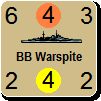

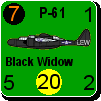


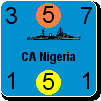



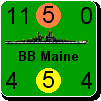
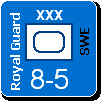
 New Messages
New Messages No New Messages
No New Messages Hot Topic w/ New Messages
Hot Topic w/ New Messages Hot Topic w/o New Messages
Hot Topic w/o New Messages Locked w/ New Messages
Locked w/ New Messages Locked w/o New Messages
Locked w/o New Messages Post New Thread
Post New Thread